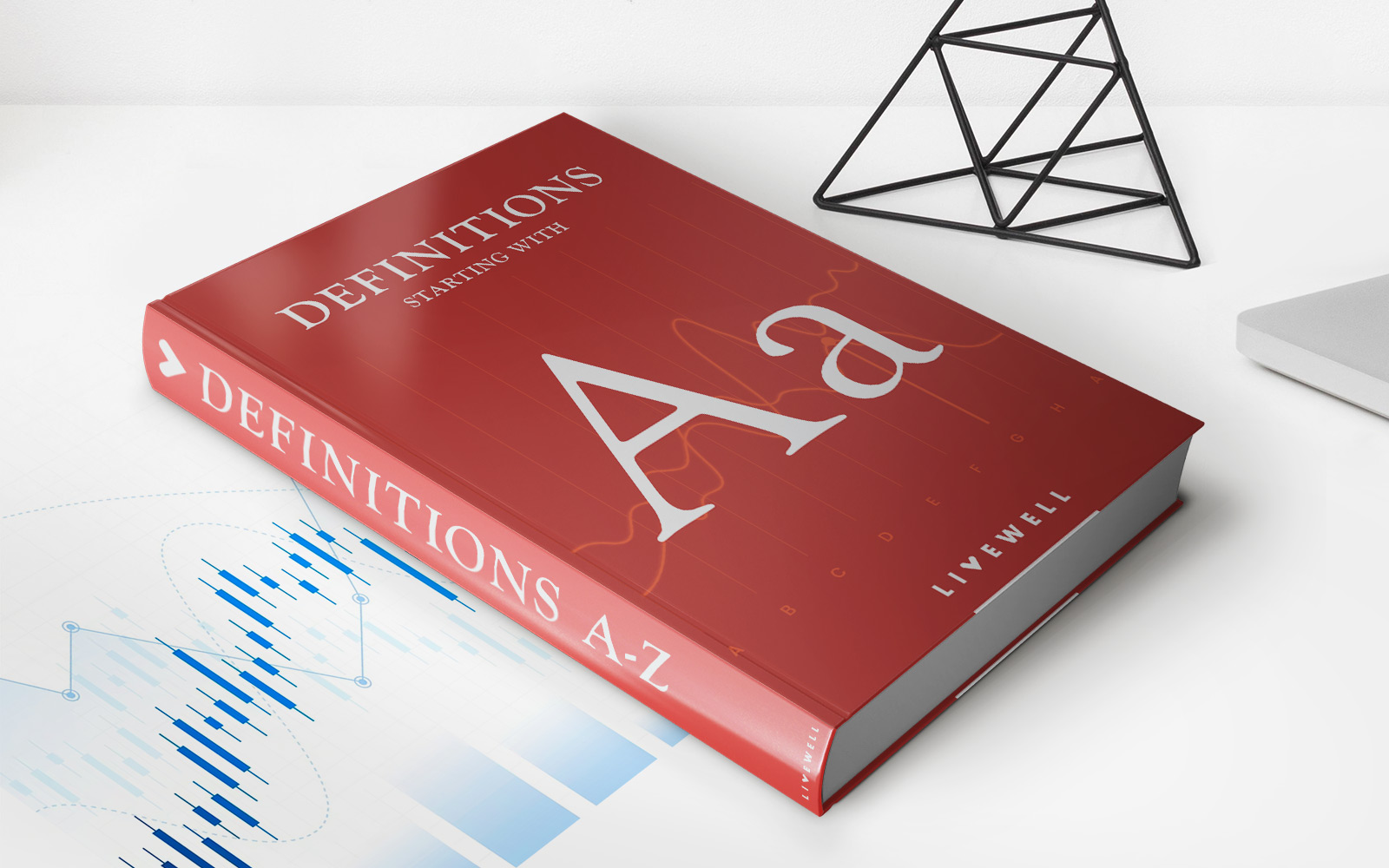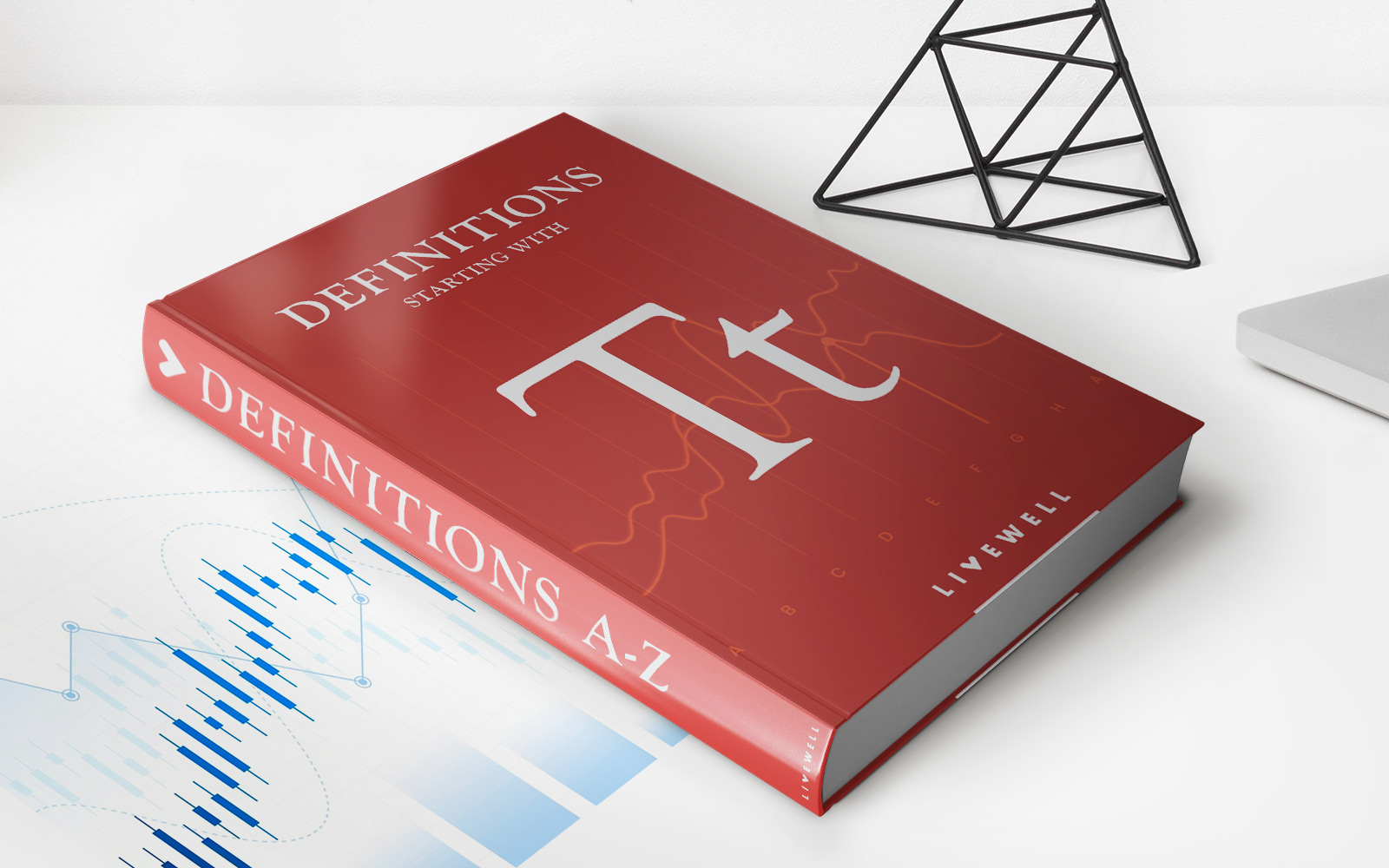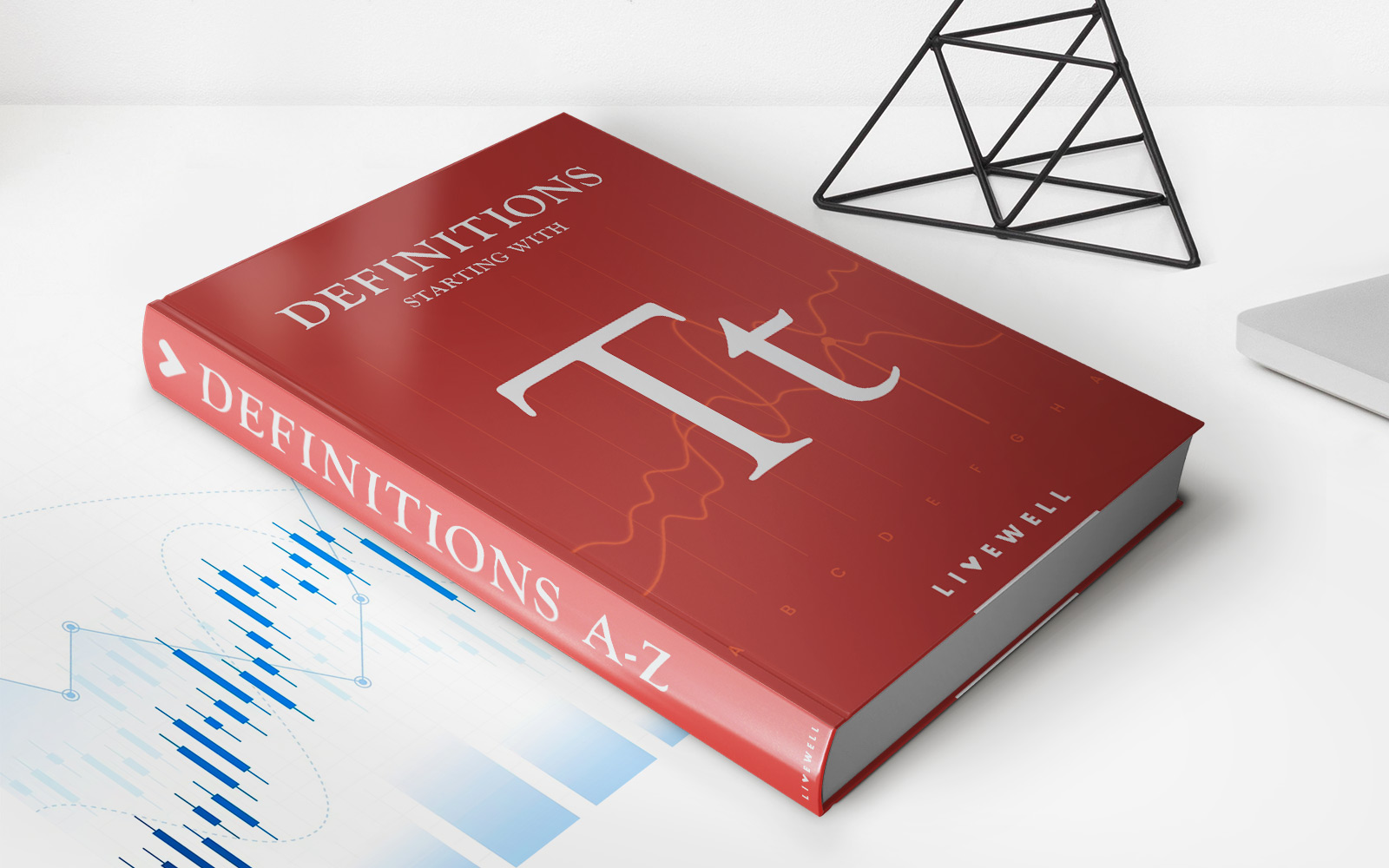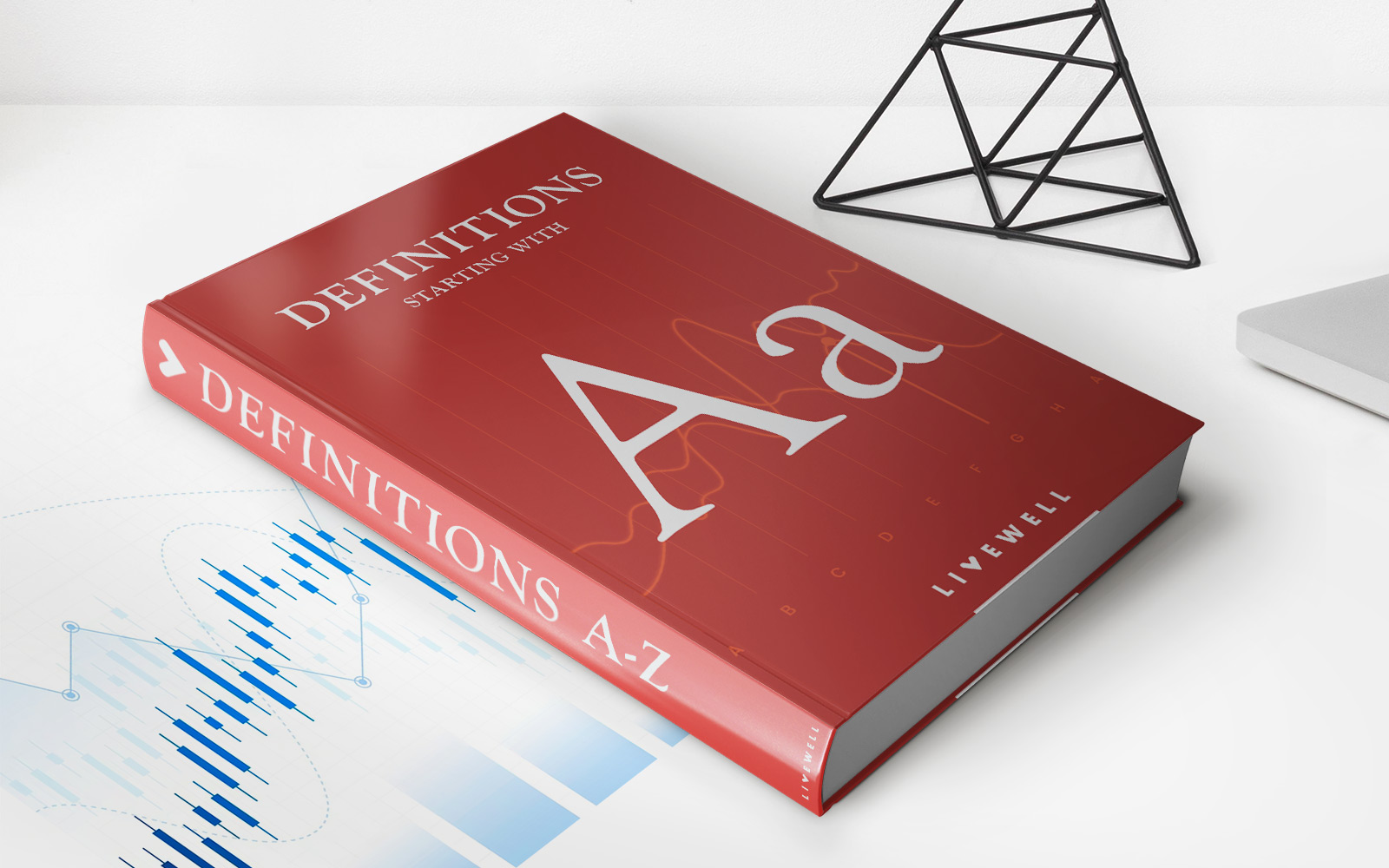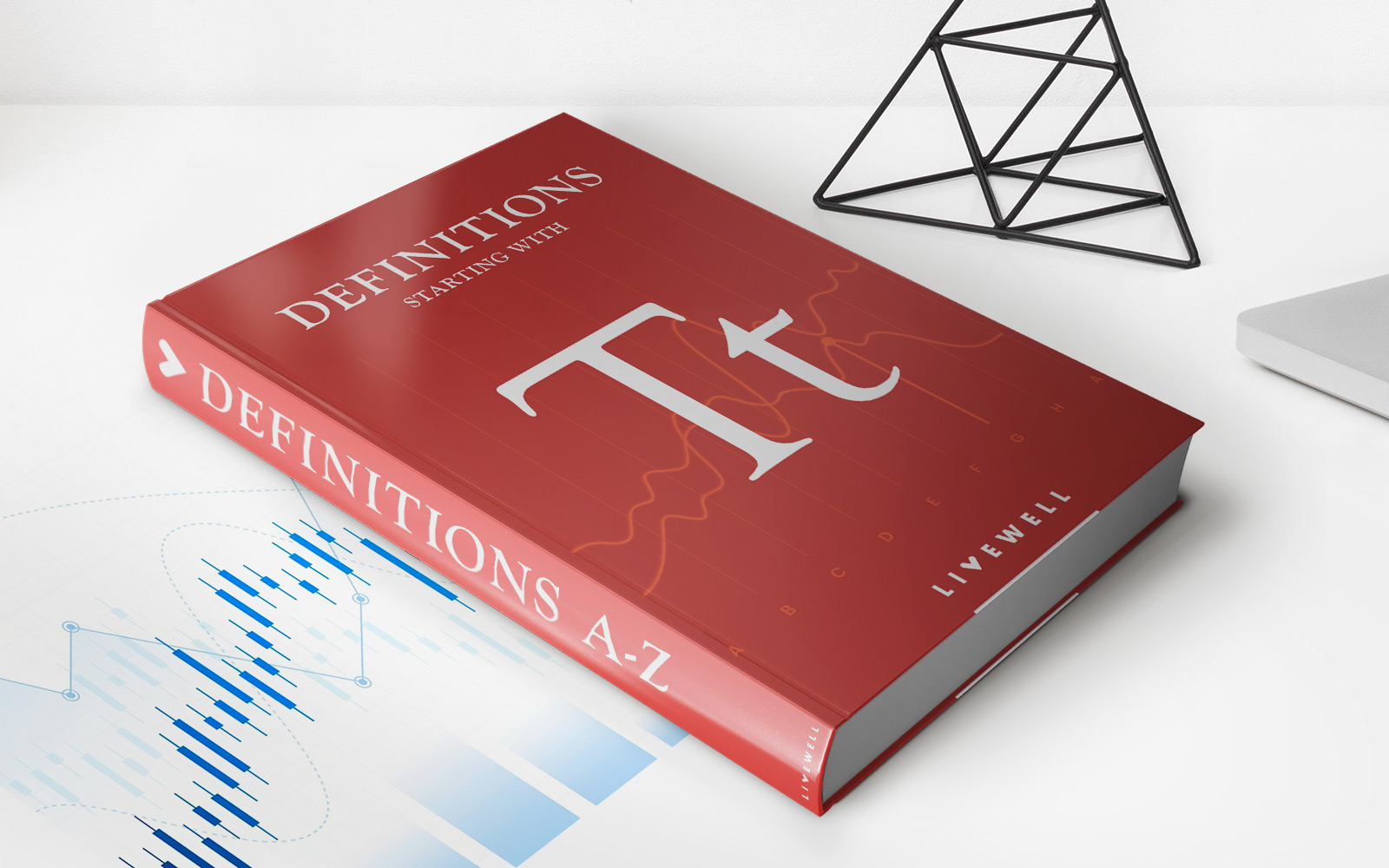Home>Finance>How Are Contributions To A Tax-Sheltered Annuity Treated With Regards To Taxation?


Finance
How Are Contributions To A Tax-Sheltered Annuity Treated With Regards To Taxation?
Published: November 2, 2023
Learn how contributions to a tax-sheltered annuity are treated for taxation purposes in the field of finance. Discover the benefits and implications today.
(Many of the links in this article redirect to a specific reviewed product. Your purchase of these products through affiliate links helps to generate commission for LiveWell, at no extra cost. Learn more)
Table of Contents
- Introduction
- What is a tax-sheltered annuity?
- Contributions to a tax-sheltered annuity
- Tax treatment of contributions
- Annual contribution limits
- Taxation of withdrawals from tax-sheltered annuities
- Early withdrawal penalties
- Rollovers and transfers of tax-sheltered annuities
- Required minimum distributions (RMDs)
- Conclusion
Introduction
A tax-sheltered annuity, also known as a TSA or a 403(b) plan, is a type of retirement savings plan available to employees of certain tax-exempt organizations, such as schools, hospitals, and nonprofit organizations. It allows individuals to contribute a portion of their salary on a pre-tax basis, meaning that the contributions are not subject to federal income tax at the time they are made.
The primary purpose of a tax-sheltered annuity is to help individuals save for retirement. By contributing to a TSA, individuals can take advantage of the potential benefits of tax deferral and accumulate funds for their future financial needs. These plans are similar to 401(k) plans offered by private sector employers but have some unique features and regulations specific to tax-exempt organizations.
In this article, we will explore how contributions to a tax-sheltered annuity are treated with regards to taxation. We will discuss the tax treatment of contributions, the annual contribution limits, the taxation of withdrawals, early withdrawal penalties, rollovers and transfers, and the requirements for minimum distributions. Understanding these aspects will help individuals make informed decisions regarding their retirement savings and tax planning strategies.
Let’s dive into the details of how contributions to a tax-sheltered annuity are handled for taxation purposes.
What is a tax-sheltered annuity?
A tax-sheltered annuity, also referred to as a TSA or a 403(b) plan, is a retirement savings plan available to employees of certain tax-exempt organizations, such as schools, hospitals, and nonprofit organizations. It is designed to help individuals accumulate funds for retirement in a tax-efficient manner.
With a tax-sheltered annuity, individuals can make contributions to their retirement account on a pre-tax basis. This means that the amount contributed is deducted from their taxable income for the year, resulting in a lower tax liability. The contributions grow tax-deferred, meaning individuals are not required to pay income taxes on the growth and earnings of the funds until they make withdrawals from the account, typically during retirement.
One of the advantages of a tax-sheltered annuity is that it allows individuals to save for retirement while potentially lowering their current tax burden. By contributing a portion of their income before taxes, individuals can reduce their taxable income for the year, which may result in a lower overall tax bill.
In addition to the tax benefits, tax-sheltered annuities often come with employer contributions. Some employers offer a matching contribution, where they match a percentage of the employee’s contribution, up to a certain limit. This employer match can significantly boost an individual’s retirement savings and is an additional incentive to participate in a tax-sheltered annuity plan.
It’s important to note that tax-sheltered annuities have contribution limits determined by the IRS. These limits dictate the maximum amount individuals can contribute to their account each year and may vary depending on factors such as age and income. It’s crucial for individuals to be aware of these limits to optimize their retirement savings and take full advantage of the tax benefits.
Overall, a tax-sheltered annuity is an attractive retirement savings option for employees of tax-exempt organizations, offering tax advantages and the opportunity to accumulate funds for a comfortable retirement.
Contributions to a tax-sheltered annuity
Contributions to a tax-sheltered annuity are an essential aspect of building retirement savings. These contributions are made on a pre-tax basis, meaning they are deducted from an individual’s taxable income for the year. Let’s take a closer look at how contributions to a tax-sheltered annuity work.
The IRS sets annual contribution limits for tax-sheltered annuities. For the year 2021, the limit is $19,500 for individuals under the age of 50. Individuals who are 50 years of age or older can make an additional catch-up contribution of up to $6,500, bringing their total contribution limit to $26,000. These limits are subject to change each year, so individuals should stay updated with the latest IRS guidelines.
Contributions to a tax-sheltered annuity are typically deducted from an employee’s paycheck before taxes are withheld. This reduces the employee’s taxable income, effectively lowering their overall tax liability. By contributing to a tax-sheltered annuity, individuals not only save for retirement but also enjoy immediate tax benefits.
It’s important to note that while contributions to a tax-sheltered annuity reduce an individual’s taxable income, they are still subject to certain federal taxes, such as Social Security and Medicare taxes. These taxes are based on the individual’s income before the pre-tax contributions are deducted.
Additionally, some employers may offer matching contributions to their employees’ tax-sheltered annuities. This means that the employer will contribute a certain percentage of the employee’s contribution, up to a specific limit. For example, an employer may match 50% of the employee’s contribution up to 5% of their salary. Employer matching contributions are a valuable benefit that can significantly enhance an individual’s retirement savings.
It’s important for individuals to consider their specific financial situation and goals when determining how much to contribute to their tax-sheltered annuity. While maximizing contributions may be ideal for some, others may need to consider their other financial obligations and cash flow requirements.
Overall, contributions to a tax-sheltered annuity provide individuals with an opportunity to save for retirement while simultaneously reducing their taxable income and enjoying potential employer matching contributions. By taking advantage of these pre-tax contributions, individuals can set themselves up for a more secure financial future.
Tax treatment of contributions
The tax treatment of contributions to a tax-sheltered annuity is one of the key advantages of this retirement savings option. Let’s explore how these contributions are treated for tax purposes.
When individuals make contributions to a tax-sheltered annuity, the amount they contribute is deducted from their taxable income for the year. This means that the contributions are not subject to federal income tax at the time they are made. As a result, individuals can potentially lower their current tax liability by contributing a portion of their income to their tax-sheltered annuity.
The tax benefits of these contributions continue to grow over time. The money in a tax-sheltered annuity account grows on a tax-deferred basis, which means that individuals do not have to pay taxes on the growth and earnings of the funds until they make withdrawals from the account.
By deferring taxes on contributions and investment earnings, individuals have the opportunity to potentially accumulate more funds for retirement. The compounding effect of tax-deferred growth can significantly enhance the overall value of a tax-sheltered annuity over the long term.
It’s important to note that although contributions to a tax-sheltered annuity are not subject to federal income tax, they are generally subject to Social Security and Medicare taxes. These taxes are based on an individual’s income before the pre-tax contributions are deducted.
Another aspect to consider is the impact of taxes when withdrawals are made from a tax-sheltered annuity account during retirement. When individuals withdraw funds from their tax-sheltered annuity, the withdrawals are subject to federal income tax at the individual’s ordinary income tax rate at that time. The idea is that individuals will likely be in a lower tax bracket during retirement, potentially resulting in lower tax liabilities on withdrawals.
It’s important to consult with a tax professional or financial advisor to fully understand the tax implications of contributions to a tax-sheltered annuity. They can provide guidance based on an individual’s specific financial situation and goals.
In summary, contributions to a tax-sheltered annuity are treated favorably for tax purposes. The ability to make pre-tax contributions and enjoy tax-deferred growth can provide individuals with significant tax advantages and help them build a more secure financial future.
Annual contribution limits
The IRS sets annual contribution limits for tax-sheltered annuities to ensure fairness and maintain the integrity of these retirement savings plans. These limits dictate the maximum amount that individuals can contribute to their tax-sheltered annuity each year. Let’s take a closer look at the annual contribution limits and how they impact individuals’ retirement savings.
For the year 2021, the annual contribution limit for tax-sheltered annuities is $19,500 for individuals under the age of 50. This means that individuals can contribute up to $19,500 from their pre-tax income to their tax-sheltered annuity account. This limit is subject to change each year, so it’s important to stay updated with the latest IRS guidelines.
For individuals who are 50 years of age or older, there is an additional catch-up contribution limit. The catch-up contribution allows these individuals to contribute even more to their tax-sheltered annuity. In 2021, the catch-up contribution limit is $6,500, bringing the total contribution limit for individuals 50 and older to $26,000.
It’s important to note that the annual contribution limits apply to the combination of an individual’s own contributions and any employer matching contributions. For example, if an individual contributes $15,000 to their tax-sheltered annuity, and their employer provides a matching contribution of $4,000, the total contributions for that year would amount to $19,000, within the annual limit for individuals under 50.
Exceeding the annual contribution limits can result in tax implications and potential penalties. Contributions that exceed the limits are considered excess contributions. If individuals discover that they have made excess contributions, they should rectify the situation as soon as possible to avoid any penalties imposed by the IRS.
It’s worth noting that individuals who switch jobs or work for different employers during a calendar year may have multiple tax-sheltered annuity accounts. In such cases, the annual contribution limits still apply to the combined contributions across all accounts. It’s important to keep track of total contributions to ensure compliance with IRS regulations.
Understanding the annual contribution limits is crucial for individuals who want to maximize their retirement savings and take full advantage of the tax benefits of tax-sheltered annuities. It’s advisable to consult with a financial advisor or tax professional to determine the appropriate contribution level based on individual financial circumstances and retirement goals.
In summary, the IRS sets annual contribution limits for tax-sheltered annuities to regulate the amount individuals can contribute each year. Staying within these limits ensures compliance with IRS regulations and allows individuals to make the most of their tax-sheltered annuity as they save for a secure retirement.
Taxation of withdrawals from tax-sheltered annuities
When it comes time to withdraw funds from a tax-sheltered annuity, the taxation of these withdrawals is an important consideration. Let’s explore how withdrawals from tax-sheltered annuities are taxed and the implications for individuals in retirement.
Withdrawals from tax-sheltered annuities are subject to federal income tax. The withdrawals are treated as ordinary income and are taxed at the individual’s income tax rate at the time of withdrawal. This means that individuals will need to include the withdrawn amount as taxable income on their annual tax return.
It’s important for individuals to keep in mind that these withdrawals are taxed at the income tax rate applicable to their specific tax bracket. Therefore, the tax liability on withdrawals can vary depending on an individual’s overall income and other sources of taxable income.
One potential advantage of tax-sheltered annuities is that individuals typically withdraw funds during retirement when they may be in a lower income tax bracket. By waiting until retirement to make withdrawals, individuals may potentially pay a lower tax rate on those withdrawals.
It’s worth noting that if individuals withdraw funds from a tax-sheltered annuity before reaching the age of 59 ½, they may be subject to an additional 10% early withdrawal penalty on top of the regular income tax. This penalty is in place to discourage early withdrawals and incentivize individuals to keep the funds within their tax-sheltered annuity for retirement purposes.
Some tax-sheltered annuities offer the option for individuals to take loans against the accumulated funds instead of making withdrawals. These loans are not subject to income tax as long as they are paid back within a specified time frame. However, it’s important to carefully consider the terms and conditions of such loans, as failure to repay them can result in adverse tax consequences.
Individuals who have reached the age of 72 must also be aware of the required minimum distributions (RMDs) from tax-sheltered annuities. The IRS mandates that individuals start taking minimum distributions from their tax-sheltered annuity accounts by April 1st of the year following the year they turn 72. Failure to withdraw the required amount can result in significant tax penalties.
It’s important to consult with a tax professional or financial advisor to fully understand the tax implications of withdrawals from tax-sheltered annuities. They can provide personalized guidance based on an individual’s specific financial situation and retirement goals.
In summary, withdrawals from tax-sheltered annuities are subject to federal income tax and are treated as ordinary income. While the tax liability on these withdrawals depends on an individual’s income tax bracket, waiting until retirement to make withdrawals may result in a potentially lower tax rate. Careful planning and consideration of tax implications are essential for individuals in managing their tax-sheltered annuity withdrawals during retirement.
Early withdrawal penalties
Withdrawing funds from a tax-sheltered annuity before reaching the age of 59 ½ comes with potential consequences in the form of early withdrawal penalties. These penalties are in place to discourage individuals from tapping into their retirement savings prematurely and to incentivize them to keep the funds within the tax-sheltered annuity for their intended retirement purposes. Let’s take a closer look at the early withdrawal penalties and their implications.
If individuals withdraw funds from a tax-sheltered annuity before reaching the age of 59 ½, they may be subject to an additional 10% early withdrawal penalty. This penalty is imposed on top of the regular federal income tax that individuals must pay on the withdrawn amount. The early withdrawal penalty is designed to discourage individuals from prematurely depleting their retirement savings and to ensure the long-term viability of their retirement plans.
There are, however, some exceptions to the early withdrawal penalty. Individuals may be exempt from this penalty under certain circumstances, such as:
- Permanent disability: If an individual becomes permanently disabled and is unable to work, they may qualify for an exemption from the early withdrawal penalty.
- Substantially equal periodic payments (SEPP): Individuals can avoid the early withdrawal penalty by setting up a series of equal periodic payments based on specific IRS-approved methods.
- Qualified higher education expenses: Early withdrawals used to pay for qualified higher education expenses for the account holder, their spouse, children, or grandchildren may be exempt from the penalty.
- First-time home purchase: Individuals can withdraw funds penalty-free for the purchase of their first home, subject to certain limitations and restrictions.
- Unforeseen emergencies: In cases of financial hardship due to certain unexpected circumstances, individuals may be eligible for an exemption from the early withdrawal penalty.
It’s important to note that even though individuals may be exempt from the 10% early withdrawal penalty, the withdrawn amount is still subject to federal income tax as ordinary income.
Additionally, if individuals have borrowed against their tax-sheltered annuity through a loan, failure to repay the loan within a specified time frame can also result in adverse tax consequences. Unpaid loans may be considered distributions and subject to income tax and potentially the early withdrawal penalty if individuals are under the age of 59 ½.
It is advisable to consult with a financial advisor or tax professional to fully understand the implications of early withdrawals and to explore other financial options before considering tapping into a tax-sheltered annuity prematurely.
In summary, early withdrawals from a tax-sheltered annuity before the age of 59 ½ are subject to a 10% early withdrawal penalty in addition to regular federal income tax. There are, however, some exemptions to the penalty under specific circumstances. Individuals should carefully consider the potential penalties and explore alternative financial options before withdrawing funds early from their tax-sheltered annuity to maintain the long-term strength of their retirement savings.
Rollovers and transfers of tax-sheltered annuities
Rollovers and transfers provide individuals with the flexibility to manage their tax-sheltered annuity accounts and potentially consolidate them into a more favorable plan. These mechanisms allow individuals to move funds from one tax-sheltered annuity to another without incurring immediate tax consequences. Let’s explore the process of rollovers and transfers and their implications for individuals.
A rollover is the process of moving funds from one tax-sheltered annuity to another. This can be done from one employer-sponsored plan to another (such as switching jobs) or from an employer-sponsored plan to an individual retirement account (IRA). With a rollover, individuals receive a distribution from the first account and then deposit it into the new account within a specified time frame, usually 60 days. By completing the rollover within the allotted time, individuals avoid any immediate tax liability and retain the tax-deferred status of their retirement funds.
Rollovers can be direct or indirect. In a direct rollover, the funds are transferred directly from one plan to another without the individual ever receiving the funds. This is typically the most straightforward and preferred method, as it eliminates the risk of missing the 60-day rollover window and ensures a smooth transfer of funds. In an indirect rollover, the funds are distributed to the individual, who then has 60 days to deposit them into another eligible retirement account. However, with indirect rollovers, individuals need to be mindful of potential tax withholding requirements and the risk of missing the deadline.
Transfers, on the other hand, involve moving funds directly from one tax-sheltered annuity to another without any tax consequences or time limitations. Unlike a rollover, transfers do not require individuals to receive the funds themselves. Instead, the funds are transferred directly between the financial institutions managing the accounts. Transfers are a straightforward way to move retirement funds without any tax implications.
Both rollovers and transfers provide individuals with the opportunity to consolidate their retirement savings, take advantage of different investment options, or switch to a plan with lower fees or more favorable features. It’s important to note that certain restrictions and requirements may apply when considering a rollover or transfer, so individuals should consult with a financial advisor or tax professional to ensure compliance with IRS regulations and make informed decisions regarding their retirement savings.
It’s worth mentioning that rollovers and transfers do not affect an individual’s annual contribution limits. The amount rolled over or transferred is not considered a contribution for the current tax year and does not count towards the annual limit.
In summary, rollovers and transfers provide individuals with flexibility and options when it comes to managing their tax-sheltered annuity accounts. Whether consolidating funds, diversifying investments, or switching to a more favorable plan, individuals can navigate these processes to optimize their retirement savings. By understanding the requirements and consulting with experts, individuals can make informed decisions and ensure a smooth transition of their tax-sheltered annuities.
Required minimum distributions (RMDs)
Required minimum distributions (RMDs) are an essential aspect of tax-sheltered annuities and play a crucial role in retirement planning. RMDs are the minimum amounts that individuals must withdraw from their tax-sheltered annuity accounts each year once they reach a certain age. Let’s explore what RMDs are, when they apply, and their significance for retirement savers.
The IRS mandates that individuals start taking RMDs from their tax-sheltered annuities by April 1st of the year following the year they turn 72. This age was adjusted from 70½ as a result of the SECURE Act, which was passed in 2019 to encourage individuals to continue working and saving for retirement for a longer period.
The purpose of RMDs is to ensure that individuals do not indefinitely defer their tax obligations and that tax-sheltered annuities serve their intended purpose of providing retirement income. By requiring withdrawals, the IRS aims to capture the tax revenue that has been deferred for years and to prevent taxpayers from excessively prolonging the accumulation of their tax-advantaged retirement funds.
The specific amount of the RMD is determined based on the individual’s account balance and their life expectancy, as calculated by the IRS. The IRS provides various tables and formulas to guide individuals in determining their RMD amount, taking into account factors such as age and beneficiary status. Failure to withdraw the correct RMD amount can result in significant tax penalties.
It’s important to note that the funds withdrawn as RMDs are considered taxable income and are subject to federal income tax. Individuals must include the RMD amount as part of their annual income when filing their tax returns.
Individuals have the flexibility to withdraw more than the required minimum amount if they so choose. However, it’s not possible to apply excess withdrawals from one year to fulfill the RMD requirement of future years. Each year, the RMD is determined based on the account balance and life expectancy for that specific year.
It’s crucial for individuals who are approaching the age of 72 or who have already reached that age to familiarize themselves with the rules and implications of RMDs. Failing to take the required distribution by the deadline can lead to steep tax penalties—up to 50% of the amount that should have been withdrawn.
Consulting with a financial advisor or tax professional is highly recommended to ensure compliance with RMD rules and to develop a strategy that best aligns with an individual’s financial goals and circumstances.
In summary, RMDs are the mandatory withdrawals that individuals must take from their tax-sheltered annuities once they reach a certain age. These withdrawals are determined based on IRS calculations and represent taxable income. Understanding and fulfilling RMD requirements is essential to avoid penalties and to maintain a well-structured retirement plan.
Conclusion
Understanding the treatment of contributions, annual contribution limits, taxation of withdrawals, early withdrawal penalties, rollovers and transfers, and required minimum distributions are crucial aspects of managing tax-sheltered annuities. These retirement savings plans provide individuals with valuable tax advantages and the opportunity to accumulate funds for a secure financial future.
Contributions to tax-sheltered annuities allow individuals to reduce their current tax liability by making pre-tax contributions. The annual contribution limits set by the IRS determine the maximum amount individuals can contribute each year. It’s important to stay within these limits to optimize retirement savings and take full advantage of the tax benefits.
When individuals withdraw funds from tax-sheltered annuities during retirement, they are subject to federal income tax. Additionally, early withdrawals made before the age of 59 ½ can result in an additional 10% early withdrawal penalty. Understanding these tax implications and planning withdrawals accordingly is essential to avoid unnecessary tax burdens.
Rollovers and transfers of tax-sheltered annuities offer individuals the flexibility to move funds between accounts without incurring immediate tax consequences. These mechanisms allow individuals to consolidate retirement savings, take advantage of different investment options, or switch to plans with more favorable features.
Finally, required minimum distributions (RMDs) ensure that tax-sheltered annuities serve their intended purpose of providing retirement income. Individuals must start taking RMDs by a certain age and withdraw the minimum amount specified by the IRS. Failure to meet RMD requirements can result in significant tax penalties.
To make the most of tax-sheltered annuities, it’s crucial to consult with financial advisors and tax professionals who can provide personalized guidance based on individual financial goals and circumstances. By understanding the taxation and regulations surrounding tax-sheltered annuities, individuals can make informed decisions and build a strong foundation for their retirement savings.
In summary, tax-sheltered annuities offer valuable tax advantages for retirement savings. By considering the taxation of contributions and withdrawals, annual contribution limits, early withdrawal penalties, rollovers and transfers, and required minimum distributions, individuals can navigate these retirement savings plans effectively and plan for a financially secure future.
